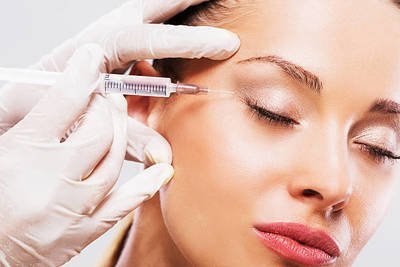

Botox procedures in Dermatology are to treat wrinkles and facial creases. Botox is a name of a toxin produce by the bacterium Clostridium botulinum. Other brand names like Dysport and Xeomin.
How does Botox work?
Usually, brain sends electrical messages to muscles so that they can contract and move. The electrical message is transmit to the muscle by a matter namely acetylcholine. Botox works to block the release of acetylcholine; as a result the muscle does not receive the message to contract. This means that the muscle spasms or movements that cause wrinkling, stop or are greatly reduce after Botox procedure.
How Botox Procedure done?
Botox procedures in dermatology takes only a few minutes and doesn’t require anesthesia. It is inject with a fine needle into exact muscles with just slight uneasiness.
Normally takes 7 to 14 days to get full effect, and it is best to keep away from alcohol early at least one week before the procedure. Also stop taking aspirin and anti-inflammatory medications two weeks previous to treatment to decrease staining.
Which area Botox can be inject?
- Forehead Lines: Frontals Muscle. Injections of 5 to 25u will usually be sufficient. Horizontal lines (“pleats”) are inject every 1 1/2 to 2 cm but high adequate from the brow to prohibit brow ptosis.
- Frown Lines: Corrugator Supercilii and procure muscles. Injections of 20 to 25u will usually be adequate. Approximately 5 injections can be given in this area between 2 an 2.5u per corrugator and 2.5u into the procures. The injector should take care not to inject pass the middle of the brow, or above or past the pupil.
- Lateral Orbital Lines: Orbicularis Oculi and Procures Muscles. Injections of 5 to 15u will usually be adequate. The pleats are inject with 2.5u. The injector should take care to avoid lid ptosis by injecting too close to the eyelids themselves.
- Transverse nasal Lines: Injections of 5 to 25u will usually be adequate.
- Smoker’s Lines: Orbicularis Oris Muscle. 5u per line will usually be adequate.
- Marionette Lines: Depressor Anguli Oris and Trangularis Muscles.
- Brow Lift: It can be inject above the outer area of the brow to create a lifting effect. Make sure your injector is skill in this area or the risk of brow ptosis may increase.
What are the side effects of Botox?
Temporary staining is the most general side effect of Botox. Headaches, which end in 24 to 48 hours, may occur but this is rare. A small percentage of patients may develop eyelid loose. Subsequently ends within three weeks. Likewise eyelid loose can happens when the Botox moves around. In short don’t rub the treat area for 12 hours after injection and lie down for three to four hours.
Who should not receive Botox?
People who are pregnant, breastfeeding and have a neurological disease should not use Botox procedures.
For more information, consult super specialists in Dr Sunny medical center at Sarjapur Road and Bellandur.
